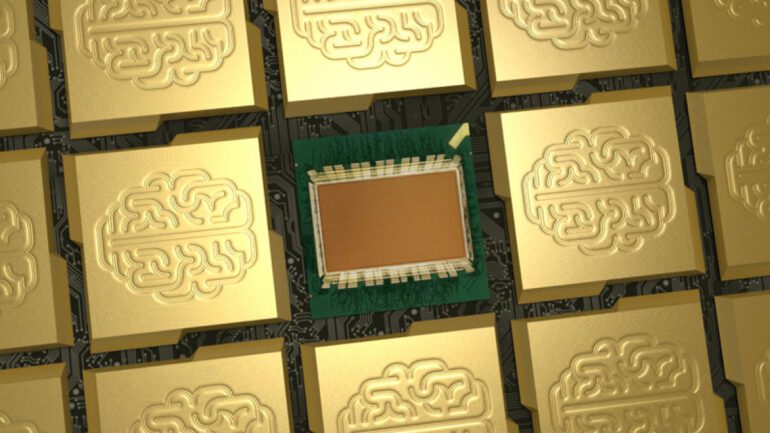TL;DR:
- IBM unveils prototype “neural” chip for energy-efficient AI.
- Chip design inspired by human brain connections.
- Promises enhanced efficiency and reduced battery drain for AI devices.
- Memristor-based components mimic brain synapses for analog data storage.
- Potential to revolutionize AI in smartphones, cars, and data centers.
- Challenges remain in cost and manufacturing for widespread adoption.
- Future implications include energy-saving devices and reduced carbon footprint.
Main AI News:
In an era where artificial intelligence (AI) is becoming an indispensable part of modern technology, a groundbreaking innovation emerges to address a growing concern – energy consumption. Renowned tech behemoth IBM has unveiled a prototype “neural” chip that holds the promise of revolutionizing AI’s energy efficiency landscape.
The looming ecological impact of vast warehouses housing energy-hungry computers to fuel AI systems has been a source of concern. IBM’s ingenious solution could potentially reshape this narrative. The prototype chip is poised to usher in an era of enhanced efficiency and reduced battery drain for AI chips, especially in the realm of smartphones.
So, what sets this innovation apart? The crux lies in its design, inspired by the intricate network of connections within the human brain. Drawing a parallel to the remarkable prowess of the human brain’s performance with minimal energy consumption, Thanos Vasilopoulos, a scientist at IBM’s Zurich research lab, emphasizes the chip’s efficiency. He envisions a landscape where intricate tasks can be executed even in power-restricted environments like cars, mobile phones, and cameras, signaling a paradigm shift for the AI industry.
This innovation extends its potential beyond personal devices. Cloud providers stand to reap the benefits of these chips, significantly reducing their energy costs and carbon footprint. The marriage of technology and sustainability in the digital era takes a leap forward.
The core of this innovation lies in its embrace of analog components known as memristors – a deviation from the conventional digital chips that store data as binary code. Analogous to the contrast between a simple light switch and a nuanced dimmer switch, this neural chip imitates the complexity of human synapses. Professor Ferrante Neri, an authority from the University of Surrey, highlights the tantalizing potential of memristors to mimic the memory and connectivity of biological synapses. This approach, akin to nature’s blueprint, could lead to the creation of a network reminiscent of the human brain.
While the horizon glows with promise, challenges remain on the path to widespread adoption. Memristor-based computing isn’t a straightforward endeavor, with cost and manufacturing hurdles to navigate. Yet, these challenges do not eclipse the transformative potential that this technology brings.
The implications are far-reaching, from more efficient phones and cars to energy-saving data centers. IBM’s vision of a future powered by these neural chips has the potential to reshape not only the way we approach AI but also how we conserve energy and resources. Professor James Davenport, a distinguished IT scholar from the University of Bath, underlines the complexity of this transition, likening it to a “possible first step.” Indeed, this innovation beckons us to a future where AI and sustainability stand hand in hand, ready to redefine technological landscapes.
Conclusion:
IBM’s pioneering “neural” chip presents a monumental stride toward greener AI. This innovation holds the potential to redefine the AI landscape by delivering unparalleled energy efficiency, offering opportunities for transformative change in various sectors. While challenges persist, the fusion of technological advancement and sustainability sets the stage for a market shift towards more efficient and environmentally conscious solutions.

